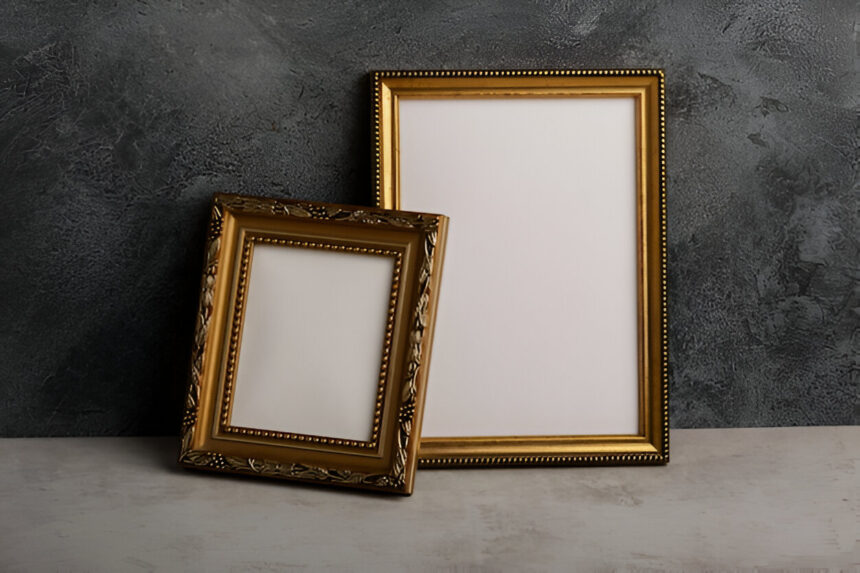Picture framing is not merely a way to display artwork or photographs—it is an art form in itself that enhances and protects the pieces it holds. From choosing the right frame to understanding the materials and techniques involved, picture framing is a blend of creativity and precision. In this article, we will delve into the world of picture framing, exploring its history, importance, and the various aspects that go into creating the perfect frame for your cherished pieces.
History of Picture Framing
The practice of framing artwork dates back centuries, with early examples found in ancient Egyptian tombs and Roman villas. In medieval times, elaborate wooden frames were used to decorate religious paintings in churches and castles. However, it was during the Renaissance period that picture framing truly evolved into an art form, with artisans creating ornate gilded frames to complement the masterpieces of artists like Leonardo da Vinci and Michelangelo.
As the centuries passed, picture framing styles evolved to reflect changing artistic trends and cultural influences. From the elaborate Baroque frames of the 17th century to the sleek, minimalist frames of the modern era, framing styles have continued to adapt and innovate, showcasing the ever-changing relationship between art and design.
Importance of Picture Framing
Picture framing serves several important functions beyond simply holding artwork in place. A well-chosen frame can enhance the visual impact of a piece, drawing the viewer’s eye to the artwork while complementing its colors and style. Additionally, framing provides protection for artwork, shielding it from dust, moisture, and other environmental factors that can damage or degrade the piece over time.
Furthermore, picture framing allows for personalization and customization, enabling individuals to showcase their artwork or photographs in a way that reflects their own unique style and aesthetic preferences. Whether you prefer a classic wooden frame, a sleek metal frame, or a bold, statement-making design, the frame you choose can significantly impact the overall presentation of your artwork.
Materials and Techniques
When it comes to picture framing, the materials and techniques used are crucial in determining the quality and longevity of the frame. Common materials for picture frames include wood, metal, and plastic, each offering its own unique characteristics and aesthetic appeal. Wood frames, for example, are popular for their warmth and versatility, while metal frames are favored for their sleek, contemporary look. Plastic frames are a more affordable option and come in a wide range of colors and styles.
In addition to selecting the right material, the framing process itself requires careful attention to detail and precision. Techniques such as matting, mounting, and glazing are essential components of picture framing, ensuring that the artwork is properly secured and protected within the frame. Matting, in particular, can enhance the visual impact of a piece by providing a border between the artwork and the frame, while glazing helps to protect the artwork from UV rays and other environmental hazards.
Choosing the Right Frame
When selecting a frame for your artwork or photographs, there are several factors to consider to ensure that you achieve the desired result. The style and aesthetic of the frame should complement the artwork, enhancing its visual impact without overpowering it. Consider the color, texture, and design of the frame in relation to the piece you are framing, taking into account the overall look and feel you wish to achieve.
Additionally, the size and dimensions of the frame should be chosen carefully to ensure that it fits the artwork perfectly. Oversized frames can detract from the artwork, while undersized frames may not provide adequate support and protection. Take precise measurements of your artwork before selecting a frame to ensure a proper fit.
Framing Tips and Tricks
- Conservation Framing: For valuable or irreplaceable artwork, consider conservation framing techniques that use acid-free materials and UV-protective glazing to preserve the integrity of the piece.
- Mix and Match: Experiment with different frame styles and finishes to create a unique and eclectic look that reflects your personal taste and style.
- Gallery Wall: Create a gallery wall by grouping together multiple framed pieces to create a cohesive and visually striking display.
- DIY Framing: If you are feeling creative, consider DIY framing options that allow you to customize frames to suit your artwork and space.
Conclusion
Picture framing is a blend of art, science, and craftsmanship that plays a vital role in showcasing and preserving artwork and photographs. By understanding the history, importance, materials, and techniques involved in picture framing, you can make informed decisions that enhance the visual impact and longevity of your cherished pieces. Whether you opt for a classic, ornate frame or a modern, minimalist design, the frame you choose can elevate your artwork and create a lasting impression for years to come.





